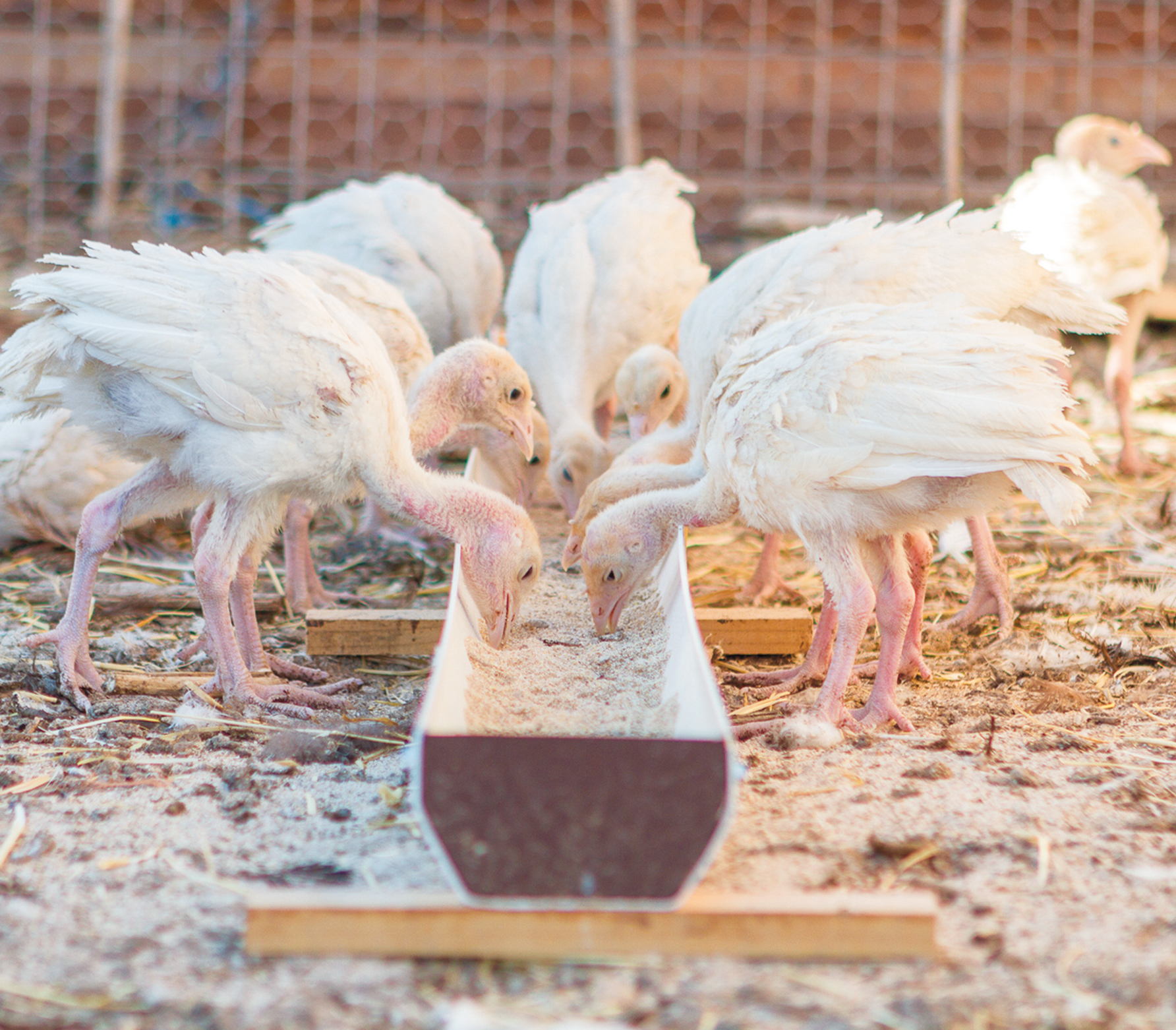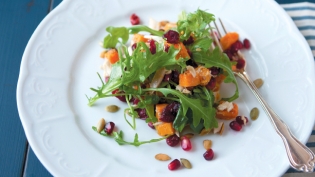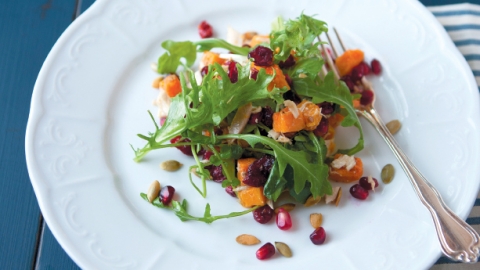Talking Turkey
Raising turkeys is a precarious pursuit. No other food is so tightly tied to a single day of the year. While industrial bigwigs like Butterball can crank out billions of pounds of brine-injected birds each year, local, small-scale turkey farmers face unique challenges. As I learned on a scorching July day last summer, raising, processing and distributing local turkeys to Thanksgiving tables around the Treasure Valley gobbles up tons of time and money.
Debi Vogel and I had taken shelter from the sun in the Vogel Farms Country Store in Kuna. Sweat beading down my neck, I handed over a $30 deposit for one of Vogel's tiny fuzzball turkeys poking its beak quizzically through the fence outside. By November, that pint-sized turkey will have plumped out to around 25 pounds. And by November, it – and the hundreds of other turkeys pecking around at Vogel Farms and nearby partner farm Cabalo's Orchard – would be spoken for.
Vogel's all natural, broad-breasted white turkeys are in high demand – they sell out each year before Thanksgiving. But this year, they'll be even more coveted. Given the cost and effort it takes to raise, feed and butcher their turkeys, Vogel and partner Cathy Cabalo decided to cut the number of poults they're raising between their two farms this season – from 800 in 2012 down to 400. And that doesn't take into account the standard 25 percent projected flock loss.
"You put a lot of money out to get them to maturity; it's feeding. Last year, by the time we had raised 600 to sell, it was over $30,000 just to get them to that point," said Vogel, who previously worked as a systems and business analyst for Fidelity Investments, jetting between New York, Boston and San Francisco before retiring in 2009.
Debi and her husband Ed grow much of the non-GMO feed for their turkeys – alfalfa, wheat, corn and barley – but they also have to purchase non-GMO soy, peas, flaxseed and camelina. All told, last year's crop of turkeys consumed around 6,000 pounds of feed per week. "We don't feed them any antibiotics. We don't feed any steroids, any growth hormones, any GMOs," said Vogel, who doesn't want to go through the paperwork and expense required to organically certify her turkeys, but insists "They're all natural."
"We don't inhibit anything . . . If they wanna go scratch through the alfalfa hay and grasses, they do. If they want to go to the grain, they do. If they want to go eat the fruit, they do. It's their choice," said Vogel. The turkeys raised at Cabalo's Orchard get the added bonus of plumping up on apples that drop from the trees in the fall.
"We put them into the fenced enclosure and they also have a shelter out there so they run free around the orchard under the trees and lay in the shade all day long," said Cabalo.
But when it came time to haul last year's flock of 600 well-fed birds to get butchered before Thanksgiving, it ended up being a logistical nightmare.
"We finally got a really good spot on the butchering schedule so we could get them butchered Tuesday for Wednesday pick up," said Vogel. "But we had people waiting to get the bird as we'd come back, so there were just all sorts of logistics we needed to work out."
Though Vogel and Cabalo distributed 200 of last year's birds through Boise Milk, Idaho's Bounty and Brown Box Organics, hundreds of cars lined up down the long gravel road to Vogel's Farm to pick up the remainder of the turkeys.
Janie Burns, owner of Homegrown Poultry in New Plymouth, a local poultry processing plant, says she also operates at peak capacity the week before Thanksgiving, paying her crew overtime and even hiring seasonal workers to handle the heavy lifting required to process 200 bulky birds a day.
"From a processing standpoint, we are just slammed the week before Thanksgiving because fresh means seven days – maybe more if you have the right refrigeration – but not much more," said Burns.
According to Burns, fresh turkeys must be consumed within seven to nine days of butchering. But the commercial turkey industry, she explained, has found a loophole to get around the holiday's small processing window while still being able to label their turkeys "fresh."
"The big turkey industry, they have massaged the USDA definition of 'frozen' and 'fresh' so that they can keep turkeys at 26 degrees and it forms kind of a frozen crust over the bird – the interior is fresh, but it's kind of suspended animation – and then they can take those out and sell them as fresh. So they can butcher year-round and they have refrigeration so they can meet that very specific standard of temperature," said Burns. "But in the meanwhile, here on the local scene, when you're buying a fresh turkey, you're buying a fresh turkey . . ."
This year, Vogel Farms and Cabalo's Orchard are charging $3.95 a pound for their turkeys to cover costs – $30 upfront to reserve the bird with the remainder paid at pick-up. According to the United States Department of Agriculture, the retail cost of a frozen whole turkey in 2011 was $1.58 a pound.
"Local food is always more expensive because it doesn't have the efficiencies of scale," said Burns.
"It hits you as a lot of money, but that is a huge bird," added Vogel. "Unless you have a ton of people over, you're going to eat on that bird for quite a while."
But local consumers were still clamoring to reserve their turkeys, even in the sweltering thick of July, when a 25 pound popsicle sounded more appealing than a steaming, 25 pound stuffed turkey.
"I get a lot of people saying Thanksgiving comes once a year, my family is gonna deserve the best," said Vogel.
But Burns believes the allure of local, naturally raised turkeys has less to do with the bronzed beast in the center of the table, and more to do with those gathered hungrily around it.
"People like to tell stories about their food; you can't tell a Butterball story," said Burns.






